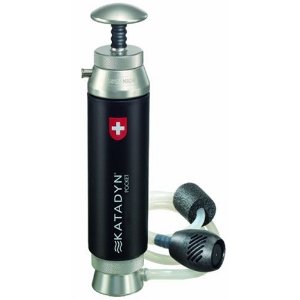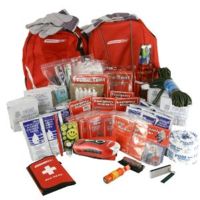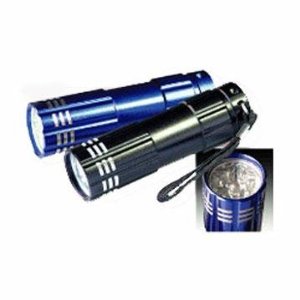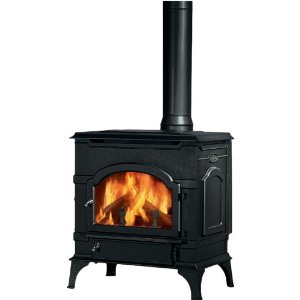|
|
|
|
Jump Start Your Personal Contingency Plan What will you do in an emergency? Can you and your family be safe at home or will you share a community shelter with hoards of people coughing, snoring, sleeping on the floor, sharing the bathroom - or having to go outside or in a corner? Remember Katrina? Everyone needs a personal contingency plan. Remember the last hurricane, earthquake or winter storm? My then 82 year old mother was without electricity for 6 days after Hurricane Floyd, even though her area suffered only moderate wind and rain. If the food or water supply is contaminated or interrupted, do you have supplies on hand to sustain yourself and your family? If the community is getting sick, can your family stay home for an extended period of time? If you need to shelter at home, are you ready? If the power fails, can you stay safe and warm? We recommend preparing for at least 2 weeks or more. Please use this list and prepare now before an emergency. If you wait, you'll be too late. 2 Week Shopping List for 2 People
Non-perishable food has a long shelf life, but won't last forever. Use and replace your stored food to ensure that it will be edible when you need it. For more information on the shelf life of food, see Shopping and Storing at www.EmergencyKitchen.com. Experiment to discover what you like. Important: If you don't have a manual can opener, buy one. Avoid foods that need to be cooked with a lot of water, high heat or more than a few minutes of cooking. Communication: Select a contact person who lives out of your local area. Make sure each family member carries that person's phone number, email address, and postal address at all times. Sometimes a person out of the affected area can be reached when local people cannot. Meet or talk with child care or elder care personnel. Make sure good plans are in place for extended care in case of emergency. Be sure each family member knows when to stay put and when to go to a pre-selected meeting place. Revisit or update plans frequently. Cooking: A Sterno Stove is a good solution for warming food. It can be purchased at any store that sells camping supplies (Wal-Mart, K-Mart, sporting goods stores). Store matches in zip lock bags or a have lighter. Heat small quantities at a time. Plan no-cook meals. Eat canned vegetables as a salad, with salad dressing or vinegar and oil. You can eat canned tuna, ham, or chicken with a vegetable salad or mixed with mayonnaise packets Water: Store 1 gallon of water per person for each day you are preparing for. You can purchase bottled water or you can bottle it yourself from tap water. You can buy collapsible water containers wherever camping supplies are sold. Another option is to wash out soda bottles and fill them with water. If you store your own water, treat it by adding 4 drops of unscented chlorine bleach to each 2 liter or half gallon bottle of water. Don't use milk containers (bacteria risk). Hygiene: Have plenty of paper plates, paper towels, plastic utensils and plastic garbage bags on hand. Trash pick-up may not be reliable in an emergency. Buy wet wipes or waterless hand sanitizer, available where soap is sold. Eyeglass cleaning wet cloths are handy also. Buy a supply of latex or synthetic gloves and N95 masks to protect yourself from contagion. Warmth: Have several sets of thermal underwear if you live in a cold winter climate. Layer clothing to keep warm. Don't forget hats, knitted skull caps and gloves. It might get cold indoors. Drape blankets over your dining table and use it as an indoor tent to keep warmth encapsulated. Power failure: Keep flashlights, battery operated lights, battery radio and plenty of extra batteries on hand. Have at least one telephone that doesn't need electricity. Health: Prepare a first-aid kit. If you take prescription medication, get an extra refill even if you have to pay for it yourself. Buy extra over the counter medications or supplies you might need. Ask your doctor if you should have a flu shot. Community: Attend an emergency preparedness meeting of neighbors, apartment residents or property managers as soon as possible. If there is no meeting planned, get together with other neighbors and organize one. It is very important to be familiar with your neighborhood or apartment association's emergency plans. Talk with neighbors and friends. Share ideas and plans. You don't have to do everything yourself when you plan together. Records: Back up your home or small business computer frequently, CDs and DVDs work well for backups. Take photographs or video tapes of all of your business and personal possessions. Put important documents, your photos/videos and your backups in your safe deposit box. The lessons from Katrina and New Orleans teach us that you cannot depend on backups stored in your local area. Back up online or send backup media and photos of your possessions to a trusted person at a distant location. If there is a disaster like hurricane Katrina, you will be able to restore your data and show what possessions you owned . Update your photos periodically. Shoes: Always wear (or have available) comfortable walking shoes. You may have to walk! Get lots more free "how-to" tips and recipes for non-perishable food at www.EmergencyKitchen.com Need a speaker for your group? |
|
|
||||||||||||||||
 |
||||||||||||||
|
||||||||||||||
 |
||||||||||||||
|
Personally, I make up my own emergency kits. But if you feel pressed for time, you can order this one from Amazon. |
||||||||||||||
 |
||||||||||||||
|
||||||||||||||
 |
||||||||||||||
|
||||||||||||||
